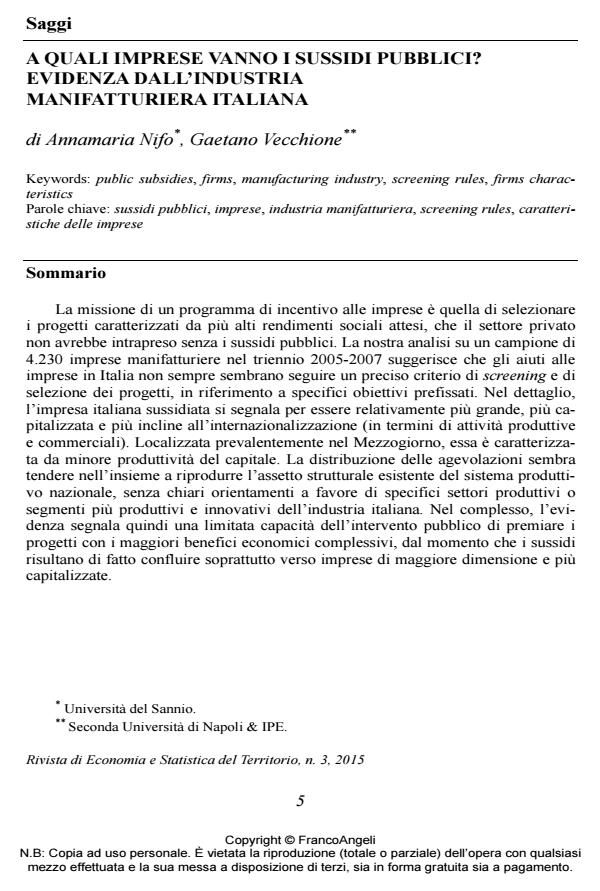A quali imprese vanno i sussidi pubblici? evidenza dall’industria manifatturiera italiana
Titolo Rivista RIVISTA DI ECONOMIA E STATISTICA DEL TERRITORIO
Autori/Curatori Annamaria Nifo, Gaetano Vecchione
Anno di pubblicazione 2015 Fascicolo 2015/3
Lingua Italiano Numero pagine 24 P. 5-28 Dimensione file 151 KB
DOI 10.3280/REST2015-003001
Il DOI è il codice a barre della proprietà intellettuale: per saperne di più
clicca qui
Qui sotto puoi vedere in anteprima la prima pagina di questo articolo.
Se questo articolo ti interessa, lo puoi acquistare (e scaricare in formato pdf) seguendo le facili indicazioni per acquistare il download credit. Acquista Download Credits per scaricare questo Articolo in formato PDF

FrancoAngeli è membro della Publishers International Linking Association, Inc (PILA)associazione indipendente e non profit per facilitare (attraverso i servizi tecnologici implementati da CrossRef.org) l’accesso degli studiosi ai contenuti digitali nelle pubblicazioni professionali e scientifiche
La missione di un programma di incentivo alle imprese è quella di selezionare i progetti caratterizzati da più alti rendimenti sociali attesi, che il settore privato non avrebbe intrapreso senza i sussidi pubblici. La nostra analisi su un campione di 4.230 imprese manifatturiere nel triennio 2005-2007 suggerisce che gli aiuti alle imprese in Italia non sempre sembrano seguire un preciso criterio di screening e di selezione dei progetti, in riferimento a specifici obiettivi prefissati. Nel dettaglio, l’impresa italiana sussidiata si segnala per essere relativamente più grande, più capitalizzata e più incline all’internazionalizzazione (in termini di attività produttive e commerciali). Localizzata prevalentemente nel Mezzogiorno, essa è caratterizzata da minore produttività del capitale. La distribuzione delle agevolazioni sembra tendere nell’insieme a riprodurre l’assetto strutturale esistente del sistema produttivo nazionale, senza chiari orientamenti a favore di specifici settori produttivi o segmenti più produttivi e innovativi dell’industria italiana. Nel complesso, l’evidenza segnala quindi una limitata capacità dell’intervento pubblico di premiare i progetti con i maggiori benefici economici complessivi, dal momento che i sussidi risultano di fatto confluire soprattutto verso imprese di maggiore dimensione e più capitalizzate.
Parole chiave:Sussidi pubblici, imprese, industria manifatturiera, screening rules, caratteristiche delle imprese
Jel codes:H2, D22, D24
Annamaria Nifo, Gaetano Vecchione, A quali imprese vanno i sussidi pubblici? evidenza dall’industria manifatturiera italiana in "RIVISTA DI ECONOMIA E STATISTICA DEL TERRITORIO" 3/2015, pp 5-28, DOI: 10.3280/REST2015-003001